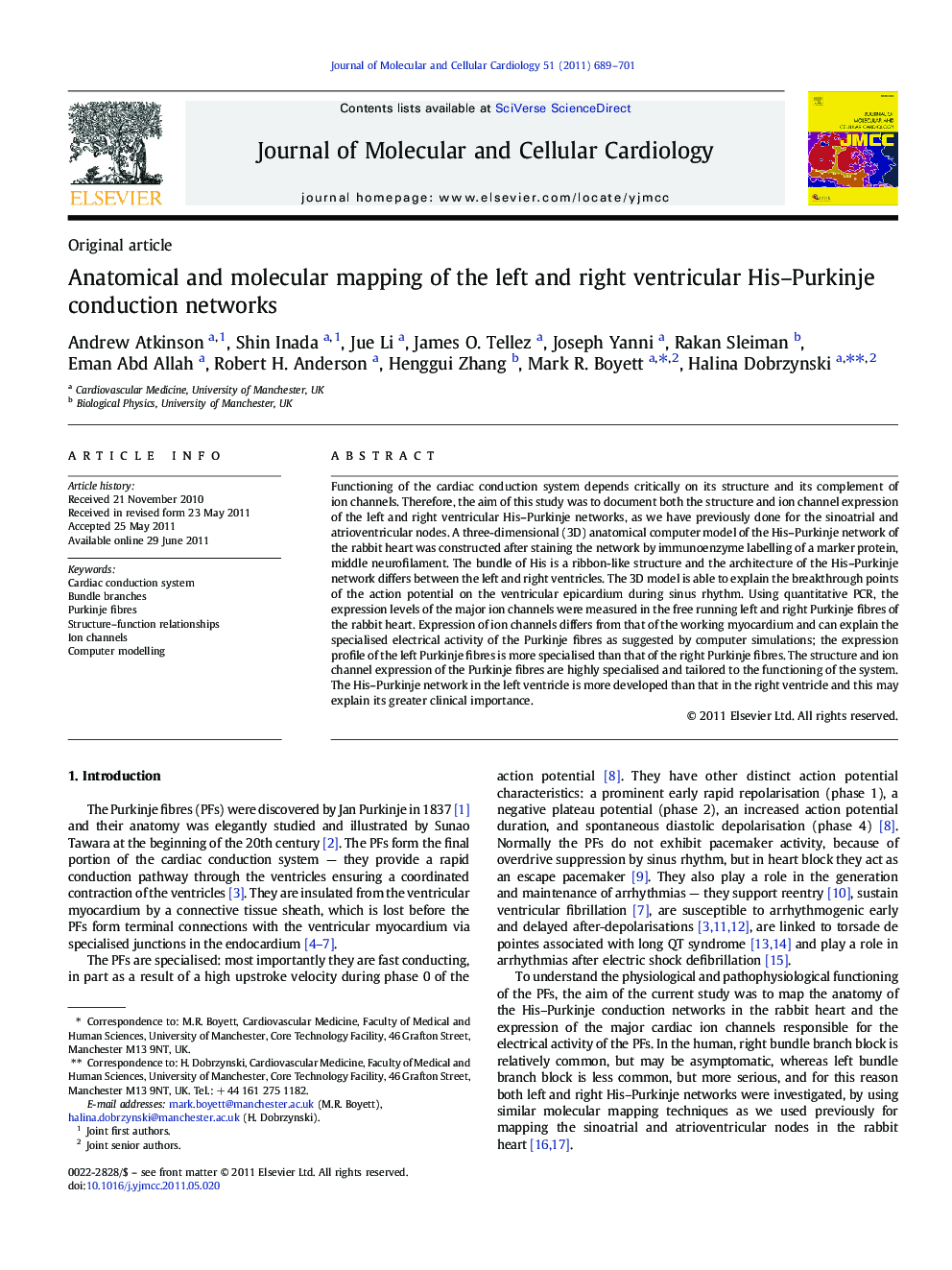| Article ID | Journal | Published Year | Pages | File Type |
|---|---|---|---|---|
| 2190743 | Journal of Molecular and Cellular Cardiology | 2011 | 13 Pages |
Functioning of the cardiac conduction system depends critically on its structure and its complement of ion channels. Therefore, the aim of this study was to document both the structure and ion channel expression of the left and right ventricular His–Purkinje networks, as we have previously done for the sinoatrial and atrioventricular nodes. A three-dimensional (3D) anatomical computer model of the His–Purkinje network of the rabbit heart was constructed after staining the network by immunoenzyme labelling of a marker protein, middle neurofilament. The bundle of His is a ribbon-like structure and the architecture of the His–Purkinje network differs between the left and right ventricles. The 3D model is able to explain the breakthrough points of the action potential on the ventricular epicardium during sinus rhythm. Using quantitative PCR, the expression levels of the major ion channels were measured in the free running left and right Purkinje fibres of the rabbit heart. Expression of ion channels differs from that of the working myocardium and can explain the specialised electrical activity of the Purkinje fibres as suggested by computer simulations; the expression profile of the left Purkinje fibres is more specialised than that of the right Purkinje fibres. The structure and ion channel expression of the Purkinje fibres are highly specialised and tailored to the functioning of the system. The His–Purkinje network in the left ventricle is more developed than that in the right ventricle and this may explain its greater clinical importance.
► We constructed a three-dimensional anatomical model of the His–Purkinje network. ► Major ion channel expression in the His–Purkinje network was measured at the mRNA level. ► His–Purkinje network architecture is complex and ion channel expression differs from that of working myocardium. ► Purkinje fibre structure is highly specialised and tailored to the functioning of this system.
